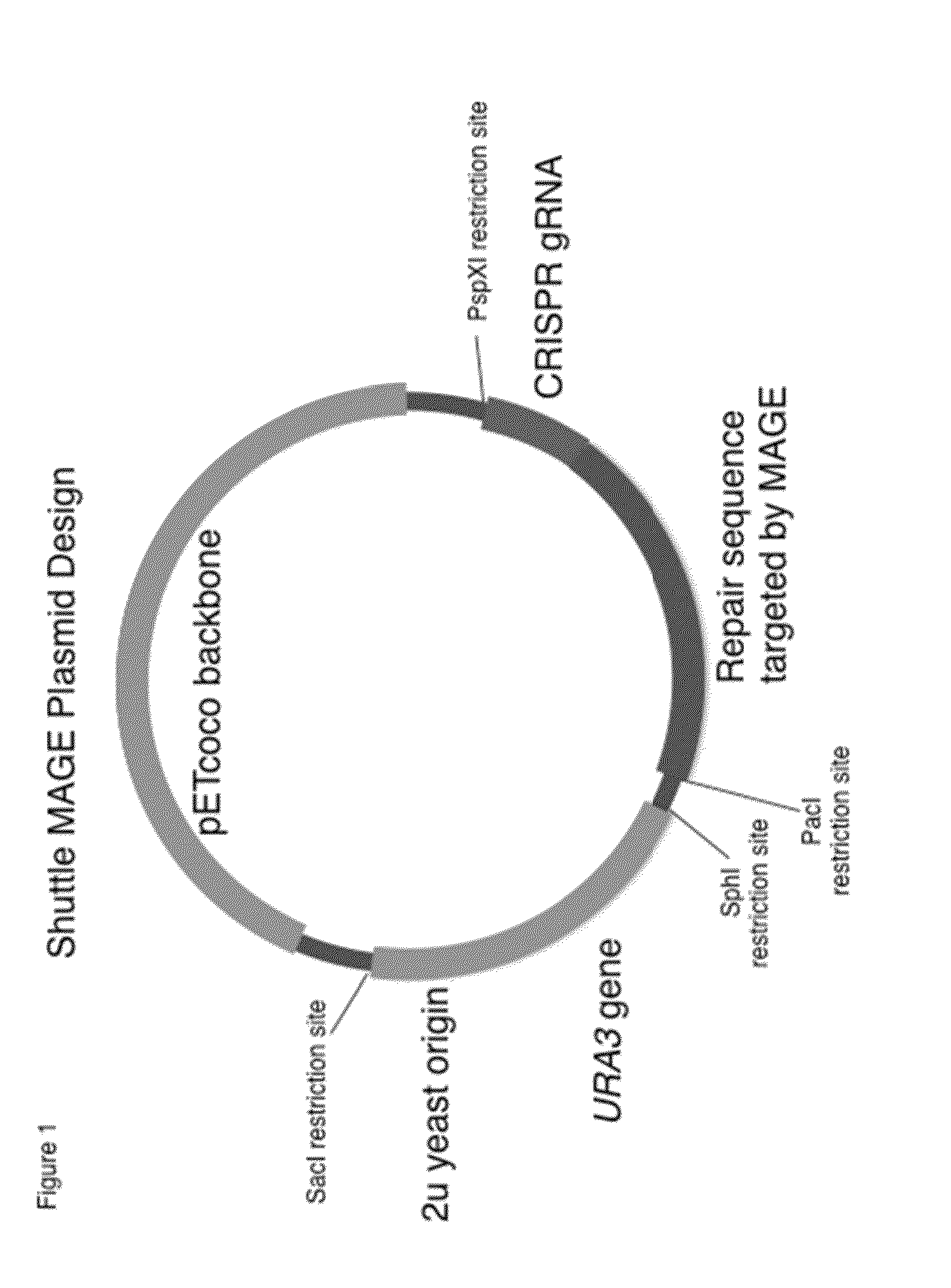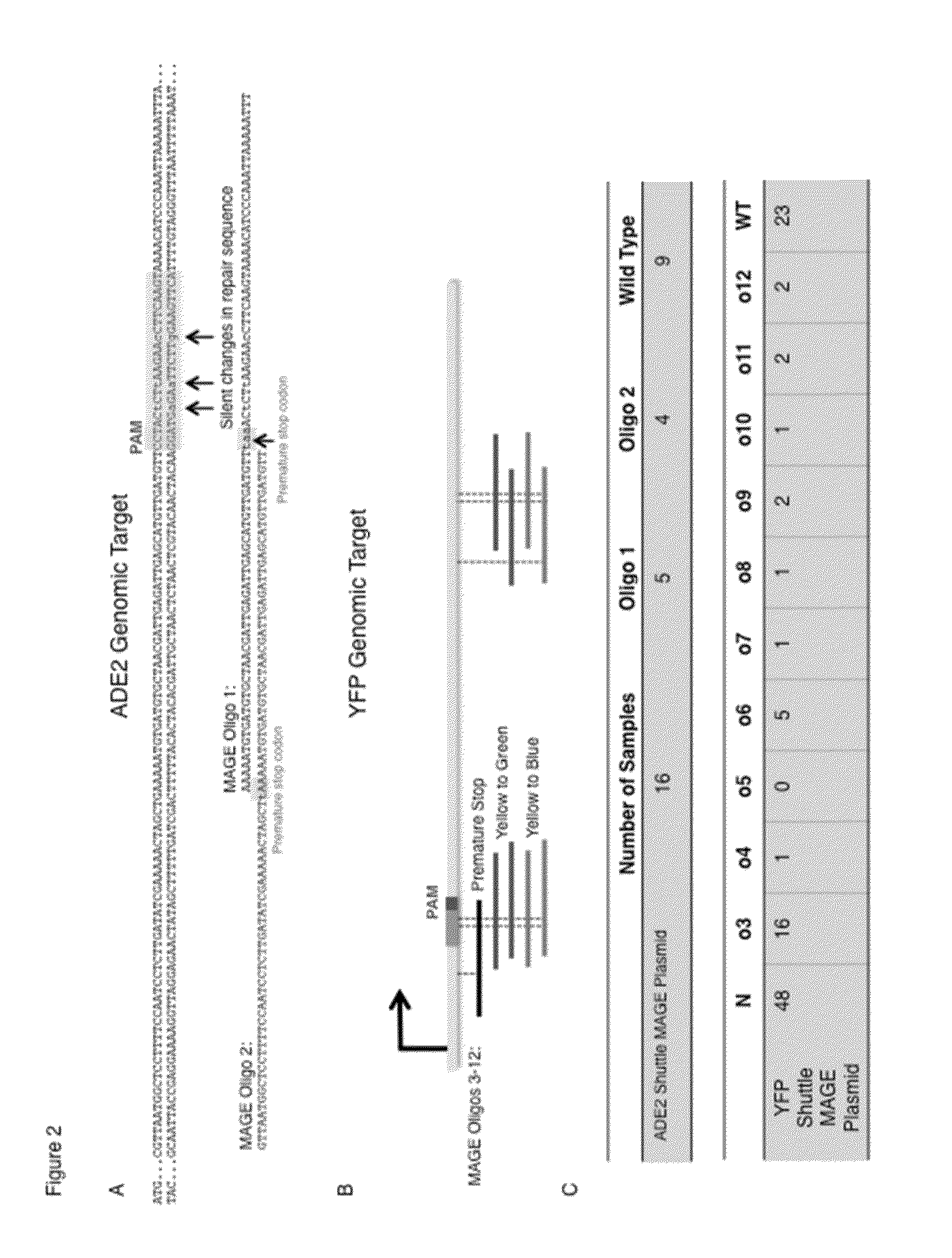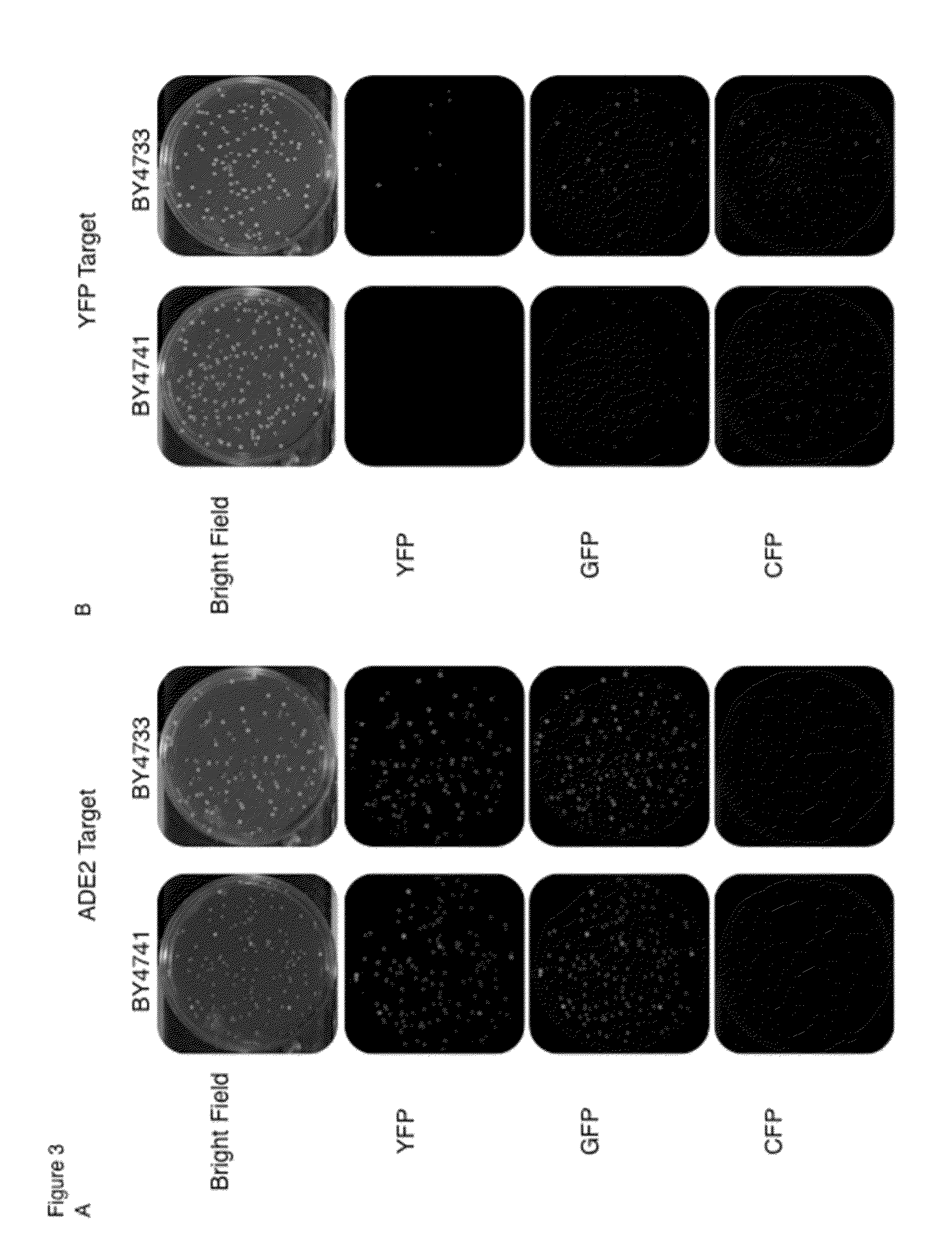Processes and host cells for genome, pathway, and biomolecular engineering
a technology of host cells and genomes, applied in the field of gene-scale editing of genetic information, can solve the problems of limiting the usefulness of rational engineering approaches, and it is not practicable to generate random and discrete mutational events in vivo and screen or select, and achieves high energetic valu
- Summary
- Abstract
- Description
- Claims
- Application Information
AI Technical Summary
Benefits of technology
Problems solved by technology
Method used
Image
Examples
example 1
Shuttle-MAGE Plasmid Construction to Engineer Cells with Modified Metabolic and Reporter Activity and Diverse Protein Products in a Saccharomyces cerevisiae Host
[0164]The yeast 2u origin of replication and URA3 gene from the pYes2 plasmid (Plasmid 2, Table 4) was amplified using primers 1 and 2 from Table 1. This fragment was digested along with the pETcoco-2 plasmid (Plasmid 1, Table 4) with the restriction enzymes SacI & SphI, and inserted into the tunable copy number plasmid backbone pETcoco via DNA ligation using T4 DNA ligation. Resulting colonies were screened via colony PCR and the correct insert was verified by sequencing. This new 2u-pETcoco plasmid (Plasmid 3 in Table 4) was harvested from E. coli and transformed into Saccharomyces cerevisiae (strains BY4741 and BY4733, Strains 1 and 2 in Table 1) using a standard lithium acetate transformation protocol (Gietz R D, Schiestl R H. Nat Protoc. 2(1):31-4. (2007)) to confirm its ability to complement the uracil auxotrophy from ...
example 2
Shuttle-MAGE Plasmid Library Generation to Engineer Cells with Modified Metabolic and Reporter Activity and Diverse Protein Products in a Saccharomyces cerevisiae Host
[0166]The 2u-pETcoco-gRNA-repair plasmids were transformed into MAGE-competent E. coli strains (EcM2.1, Strain 3 in Table 5). We performed 9 cycles of MAGE using oligos designed to introduce mutations in the ADE2 (Oligos 1 and 2, Table 2) or vYFP (Oligos 3-11, Table 2) sequences. For ADE2, each of the mutations was designed to introduce separate premature stop codons into the protein-encoding sequence (FIG. 2, A and B). For vYFP, one oligo (Oligo 12) was similarly designed to introduce a premature stop codon, while the other oligos were designed to bestow the encoded fluorescent protein with alternative properties. This was engineered to alter the encoded Venus-YFP (vYFP) gene sequence to match that of either the Emerald fluorescent protein sequence (eGFP, Oligos 3-7) or Cerulean (CFP, oligos 3, 8-11). After MAGE cycli...
example 3
Introducing Shuttle-MAGE Mutation Library into Saccharomyces cerevisiae Host to Engineer Cells with Modified Metabolic and Reporter Activity and Diverse Protein Products
[0167]Two strains of the budding yeast Saccharomyces cerevisiae (BY4741 and BY4733) were modified to express the fluorescent protein vYFP from a constitutive promoter. The pTEF-driving vYFP sequence was transformed into the endogenous HO locus with a KanMX selectable marker surrounded by loxP recognition sites using a standard lithium acetate transformation protocol (Gietz R D, Schiestl R H. Nat Protoc. 2(1):31-4. (2007)). Proper integration of this cassette at the desired location in the genome was confirmed via PCR (primers 14 and 15). The KanMX marker was later removed from the genome by introducing and expressing the CRE-recombinase enzyme from the pSH47 plasmid (Plasmid 6), identifying drug sensitive colonies, and confirming the absence of the KanMX gene by PCR. In order to prepare strains to perform CRISPR-base...
PUM
| Property | Measurement | Unit |
|---|---|---|
| Force | aaaaa | aaaaa |
| Pressure | aaaaa | aaaaa |
| Electrical resistance | aaaaa | aaaaa |
Abstract
Description
Claims
Application Information
 Login to View More
Login to View More - R&D
- Intellectual Property
- Life Sciences
- Materials
- Tech Scout
- Unparalleled Data Quality
- Higher Quality Content
- 60% Fewer Hallucinations
Browse by: Latest US Patents, China's latest patents, Technical Efficacy Thesaurus, Application Domain, Technology Topic, Popular Technical Reports.
© 2025 PatSnap. All rights reserved.Legal|Privacy policy|Modern Slavery Act Transparency Statement|Sitemap|About US| Contact US: help@patsnap.com



